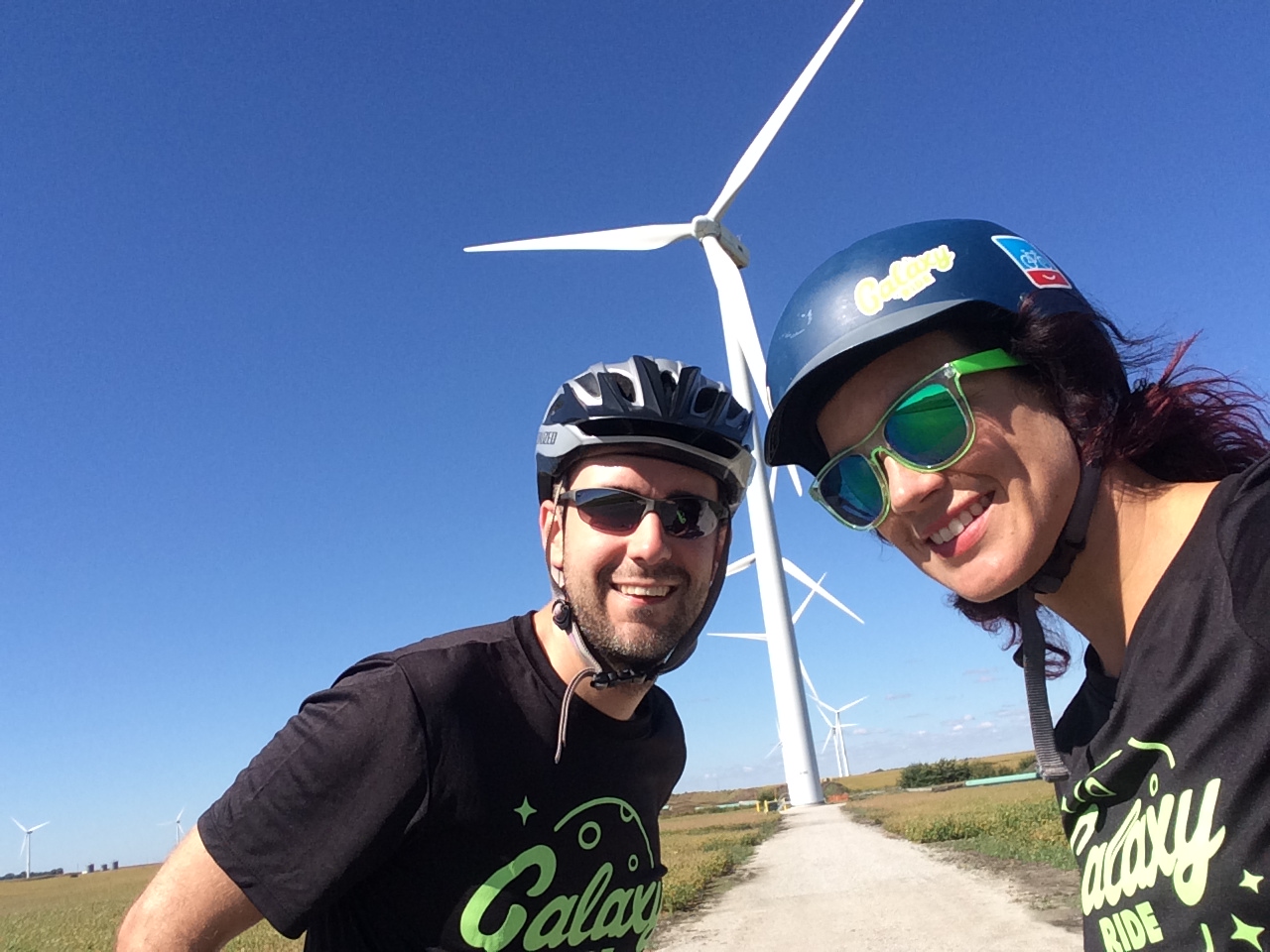#AdlerGalaxyRide Road Journal, Day Three
This is the first in a series of travel journals for the #AdlerGalaxyRide, a biking science roadshow over the 300+ miles between Chicago and St Louis. You can follow our ride by checking the website, following @AdlerPlanet on Twitter and Instagram, or searching for the #AdlerGalaxyRide hashtag.
Basically what I feel like on long bike rides: Kimmy Schmidt is right, you can do anything for 10 seconds… over, and over, and…
Yesterday was our longest haul– 74 miles from Dwight to Normal, IL. When we first planned the trip, this was the segment that scared me a little (at that point, I hadn’t ridden further than 55 miles in a day). But, one of the great things about riding a bike is that increases in distance really never feel all that bad– if you can ride 20 miles, you can ride 35; if you can ride 35, probably 55 is not going to hurt… and if you can ride 55, well, probably you can ride almost 75? I battle tested this theory in August by riding my bike out to and back from our Perseid Meteor Shower event at Cantigny Park, about 35 miles west of Chicago. Something I hadn’t thought about is that, of course, I would be riding home those 35 miles in the dark, because duh meteor shower viewing parties are at night. However, after that, I figured the ride from Dwight to Normal would be No Biggie– and in fact it was a breeze!
Cyclists beware: while wind turbines look cool, they also sometimes mean headwind.
OK, sometimes it was literally a breeze:
David Miller under a weathervane made of a motorcycle.
Fortunately the day was sparkling with sunshine and mostly flat, over beautifully paved farm roads. Galaxy Riders Kyle Sater and David Miller took turns joining me for part of the ride– and since no clouds threatened to darken our horizon I broke out the speakers and we listened to music (mostly Johnny Cash and Marvin Gaye, although Kyle survived a stretch of Propagandhi and Rise Against in the last 10 miles).
Besides the company of my fellow cycling Galaxy Riders, though, I have to give props to our awesome four-wheeled Galaxy Rider, Christina O’Connell! Christina is the head of Public Relations at the Adler, and has been given the additional title of Galaxy Ride Van Mom this week. She’s been navigating our science equipment to our various meetup points, making sure we eat and rehydrate, and generally keeping morale high. If you’ve been following our progress on the Adler’s Facebook, Twitter or Instagramfeeds, you’ve seen Christina hard at work. Thanks Christina!
Christina O’Connell, Galaxy Ride Road Mom.
After our long ride we had a night of much needed rest, and today have been gearing up for our program at the Normal Public Library! It’s an exciting stop for us, because at this point in cosmic distance, we have reached Pluto. Pluto has been in the news a lot recently, having just gotten its first-ever glamour shots taken by the New Horizons mission. I often tell people that these images are a little like seeing a photograph of a relative you’ve heard of forever, but whose face you’ve never seen: aside from just being stunningly beautiful, the Pluto images allow us to study the details of the surface of our neighbor dwarf planet and compare it with bodies in our solar system we know better (much like you would look for family resemblances and differences).
One of the most striking things about the surface of Pluto is that is shows signs of possible geological activity, and we don’t really understand why yet– on Earth, geological activity still happens because we have a melty center, heat left over from the planet’s formation and added to by radioactive decay of elements in our core. On other worlds, like Jupiter’s moon Io (the most volcanically active place in the solar system), heat is created by Jupiter’s gravity tidally kneading Io like a ball of dough. But Pluto is small enough that we wouldn’t have expected it to have much internal heat left, and there’s nothing capable of tidally heating it nearby. So for now, Pluto’s surface remains an unfolding mystery– which is great! People often think science is in the business of providing answers, but really what we do is uncover more interesting questions (while answering the easier ones along the way). For now, we’re off to the Normal Public Library to talk with folks there about the Galaxy Ride, and the Illinois State University Planetarium is offering a free show about highlights of the fall night sky right afterwards. Tomorrow, we’re rolling out of Normal and on to Lincoln.
See you in space!
Gorgeous new Pluto image taken by the NASA New Horizons spacecraft.





